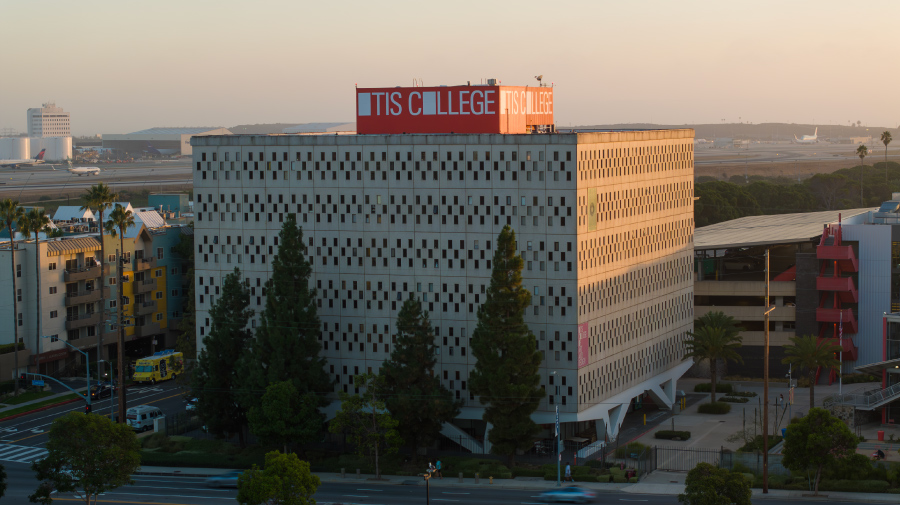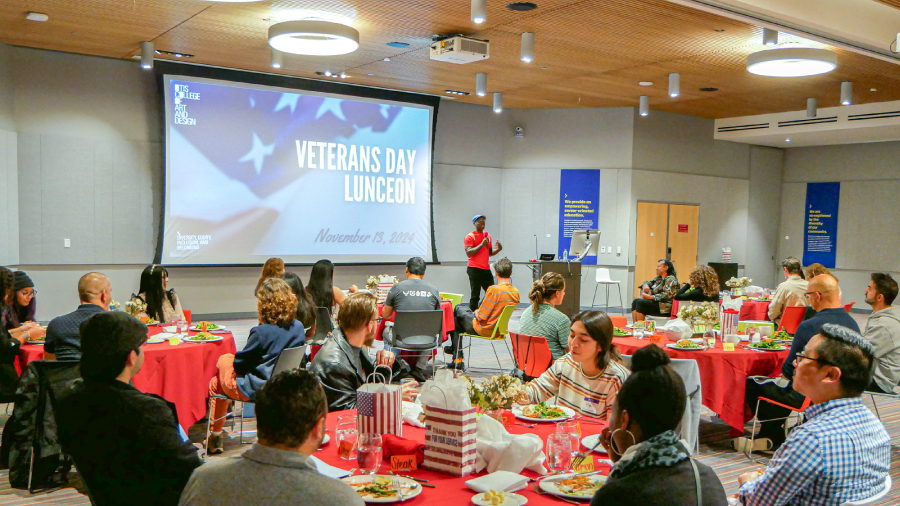Carnegie Foundation Designates Otis College an Opportunity College for Higher Earnings and Access
The College is one of only three art and design schools to achieve this new designation focused on student earnings and upward mobility post-graduation.

Otis College’s mission statement—to educate “a diverse community of students to become highly skilled, well-informed, and responsible professionals, empowering them to shape the world”—highlights a career focus that is core to its BFA and MFA programs. In fact, in 2023, 96% of recent graduates were employed within a year of receiving their Otis degree.
This success has been reaffirmed by the Carnegie Foundation and American Council on Education, which recently designated Otis as an Opportunity College for Higher Earnings and Access in its new classification focused on student outcomes. This recognition highlights colleges that help students achieve strong earnings and upward mobility post-graduation.
In addition, Otis is one of only three art and design institutions in the nation to achieve this designation. Among 3,055 colleges of all sizes surveyed by Carnegie, Otis is in the top 16%, making it a national leader for career outcomes. Carnegie’s findings align with those of a 2022 study completed by the Georgetown University Center on Education and the Workforce, which placed Otis College in the top quartile of 4,500 institutions based on return-on-investment measures.
“We are proud to be one of a select few art and design colleges in the U.S. to be an Opportunity College for Higher Earnings and Access. Carnegie’s findings illustrate Otis College’s commitment to student success even after graduation,” said Charles Hirschhorn, president of the College.

The Carnegie Foundation for the Advancement of Teaching has a long history of examining the higher education landscape in the United States. It was established by American industrialist and philanthropist Andrew Carnegie in 1905 and chartered by Congress in 1906 to be an independent education policy and research center. Since 1973, the Carnegie Classification has been the gold standard by which colleges and universities are measured. Today, Carnegie’s mission is to spur “transformational change in education so that every student has the opportunity to live a healthy, dignified, and fulfilling life.”
In doing this work, the Carnegie Foundation revised its institutional classifications to better reflect how colleges and universities serve their student populations so that policymakers, researchers, and funders have a more comprehensive understanding of higher education in the country. There are 31 classifications in this 2025 update. Previously, Carnegie’s main classification organized schools by academic programs or highest degree awarded. It didn’t fully reflect the scope of college activity across the U.S. The new Institutional Classification now organizes colleges and universities by multiple criteria, including size, all degrees awarded, and the fields in which students receive their degrees.
“The majority of students apply to college with the hope it is a path to opportunity, and the job they’ve dreamt about,” said Timothy F.C. Knowles, president of the Carnegie Foundation. “This work is about ensuring that institutions are recognized when they empower students to reach their goals and succeed.”
To this end, Carnegie created a new Student Access and Earnings Classification, which focuses on student success, measuring whether institutions are creating opportunities for students in the communities they serve and if the students earn competitive wages when they graduate. In identifying Opportunity Colleges and Universities that offer higher access and earnings, the Carnegie Foundation hopes these institutions can serve as models for others on how to enable student success.

In measuring a college’s access, Carnegie looks at two data points: undergraduate students who receive Pell Grants, and those who are from underrepresented racial/ethnic groups. These data points are then compared to the demographics for the areas that a college or university serves. To measure earnings after graduation, the research looks at how much graduates are making compared to their peers in the job market, going back eight years after they entered their college and comparing the median value to the earnings of a similar population in the locations the students are from.
The classification creates ratios to measure impact. A value of one means an institution’s data perfectly aligns with the comparison value. Opportunity Colleges and Universities (Higher Access, Higher Earnings) are those whose access ratio is at or higher than one and whose earnings ratio is at or higher than one-and-a-half (for baccalaureate and higher institutions).
“At Otis, preparing students to thrive in creative careers is core to who we are. And we succeed, as 96% of our recent graduates are employed within a year of receiving their degree. We look forward to supporting future creatives and helping them achieve upward mobility,” said Hirschhorn.
Learn more about careers and outcomes at Otis College.
Related News


Honoring Veterans at Otis College
November 10, 2025

